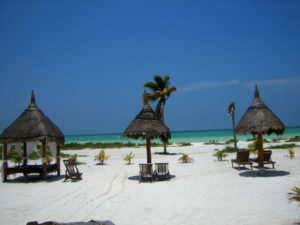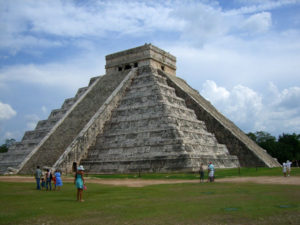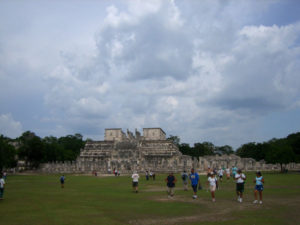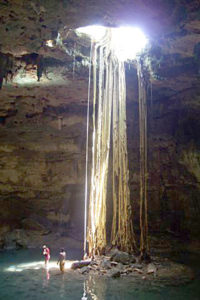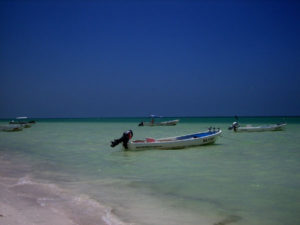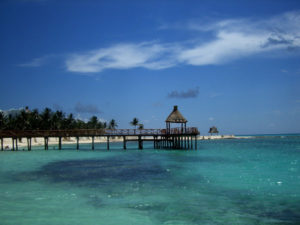Elisa Velazquez
Crystal clear waters that caress white sand beaches, wild spring break partying, Mexican food, Spanish petitions to clean your car for a quick peso… for the average American traveler these images come to mind with the mention of Cancun, Mexico. MTV has done much to promote the scenic city as a Mexican party Mecca. College students swap their money for loud music, tequila shots, and the finest Mexican beer. A common misunderstanding is the best way to enjoy Cancun is soaking up sun all-day in a resort’s beach chairs, leaving only to party all night. In fact, many travelers never venture out of the endless resorts.
Yet beyond the endless margaritas and Caribbean beach, there is a side of Cancun that people most travelers fail to see. Clear of the tourist-saturated tourist zone is a city rich in history and culture. A multitude of outdoor activities await the avid traveler. All you need is a taste for adventure.
Cancun is a fully planned resort developed in the 1970s. A great destination for families with children, it can be romantic and adventurous at the same time. Newlyweds can explore colorful reefs by snorkeling and scuba diving, while the whole family can spend a fascinating time at the Xcaret theme park. It is located only 45 minutes from the Hotel Zone and is easily reached by a short car ride. A major attraction on the Maya Riviera, Xcaret offers a variety of experiences like swimming with dolphins, swimming in a underground river, exploring a Maya village alongside archeological ruins, attending cultural night shows and visiting the highly recommended aquarium. Other outdoor activities in the area include day cruises to Playa del Carmen, fishing, jet skiing and golf.
History awaits throughout the Yucatan peninsula in extensive archeological sites. If you have not studied the history of Mexico and how civilization first started in here, visiting the Maya ruins is the best way to learn. Sites such as Tulum, Chichen Itza, Ruinas del Rey, Xel-Ha, and many others are available for touring, exploring and climbing, none far away. In 2007, Chichen Itza was named one of the Seven Wonders of the Modern world. It would be a shame not to see it.
Cenotes are another amazing creation of nature that beg consideration. Cenotes are water-filled are sinkholes, formed when the limestone weakened and collapsed. They were used by the Maya as a source of freshwater and many were the site of rituals. Today, many cenotes are open to the public for swimming. Located an hour or two away from Cancun, they are surrounded by lowland jungle with trails and narrow pre-Hispanic roads for exploring. The traveler can venture out on their own or sign up for a tour to experience how the Maya lived hundreds of years ago.
Transportation around Cancun is fairly easy, with the autobus being the cheapest way to travel. However if more comfort is desired, taxis are available at a higher price. A third option is to rent a car for more independence. The easiest way to see the sights with the least stress is to take advantage of the many tours available each day. Local professionals arrange day trips to the peninsula, cruises, theme parties and more, and most include transportation.
This remarkable city has some 140 hotels in the island Hotel Zone with something for every taste and budget. Some hotels organize special events where children can do arts and crafts while parents can participate in aqua aerobics.
Hungry? Cancun features more than 300 restaurants in the Hotel Zone alone. Here a wide variety of restaurants plate extensive menu options. Naturally, traditional Mexican food is at its finest. Fresh seafood is highly recommended in Cancun. But the city offers a vast array of international cuisine, from Italian pasta to Japanese sushi and almost everything in between. There are options for all tastes and budgets, luxurious or affordable.
So venture out and experience all Cancun has to offer.
Published or Updated on: January 1, 2008 by Elisa Velazquez © 2008

